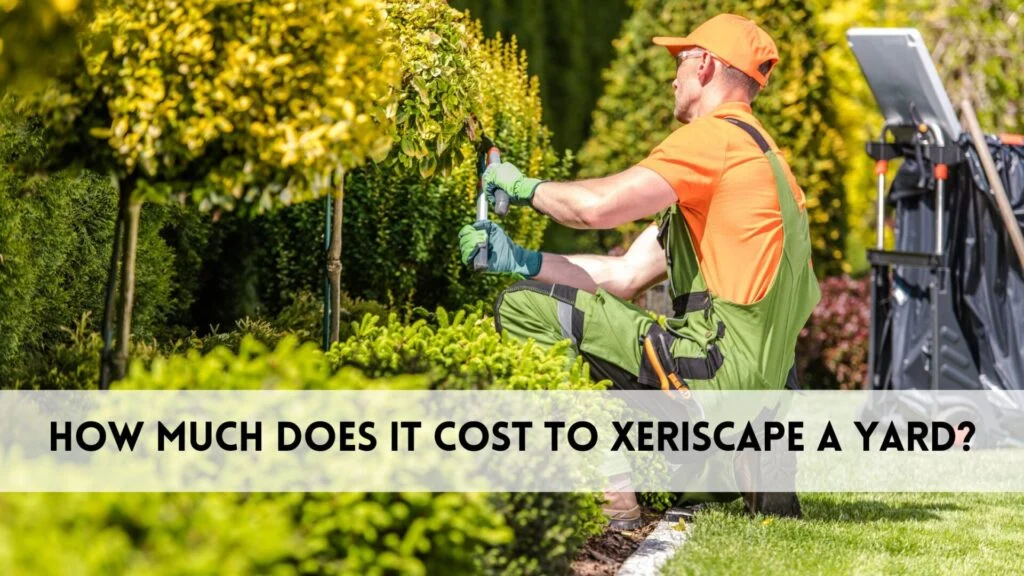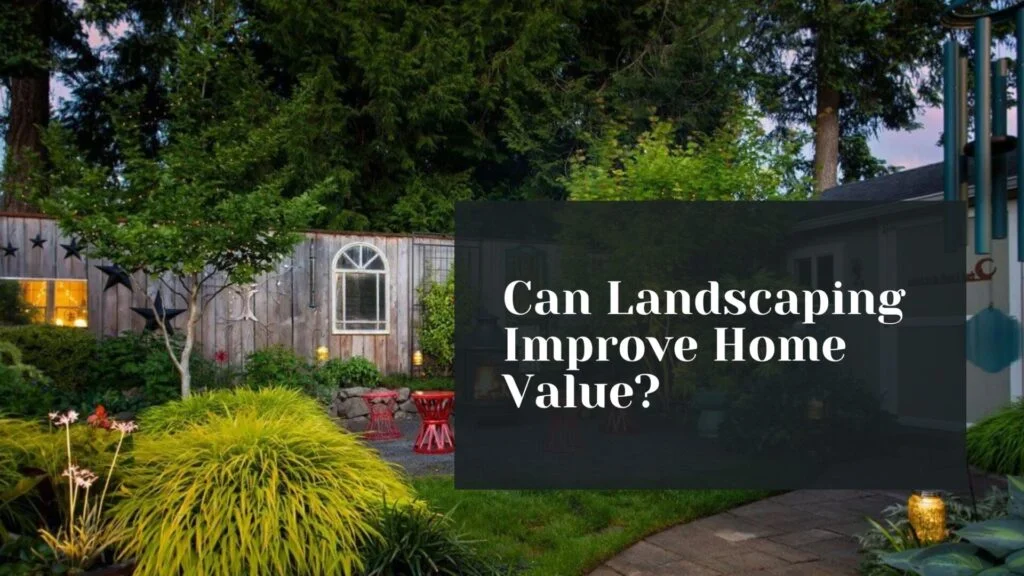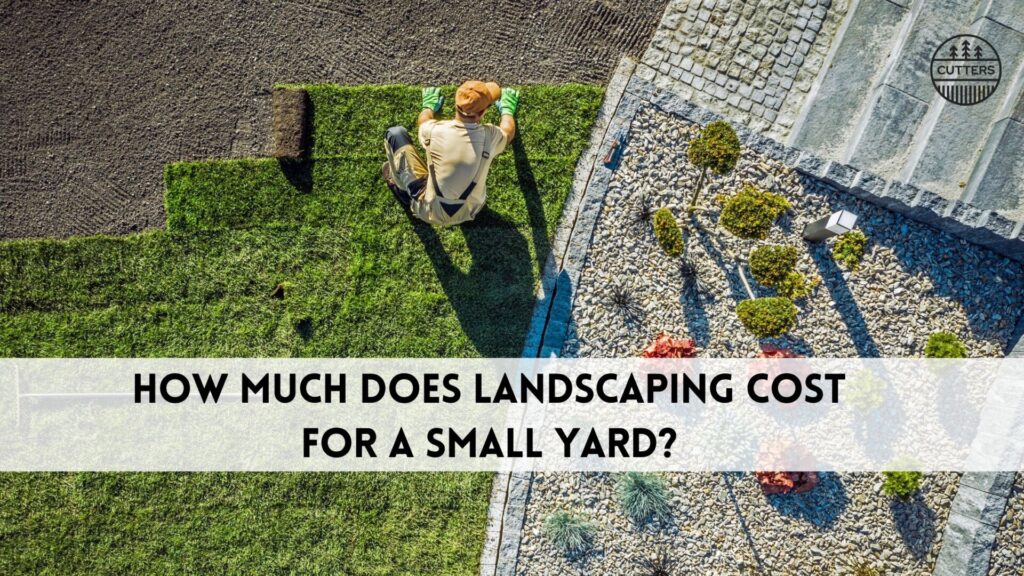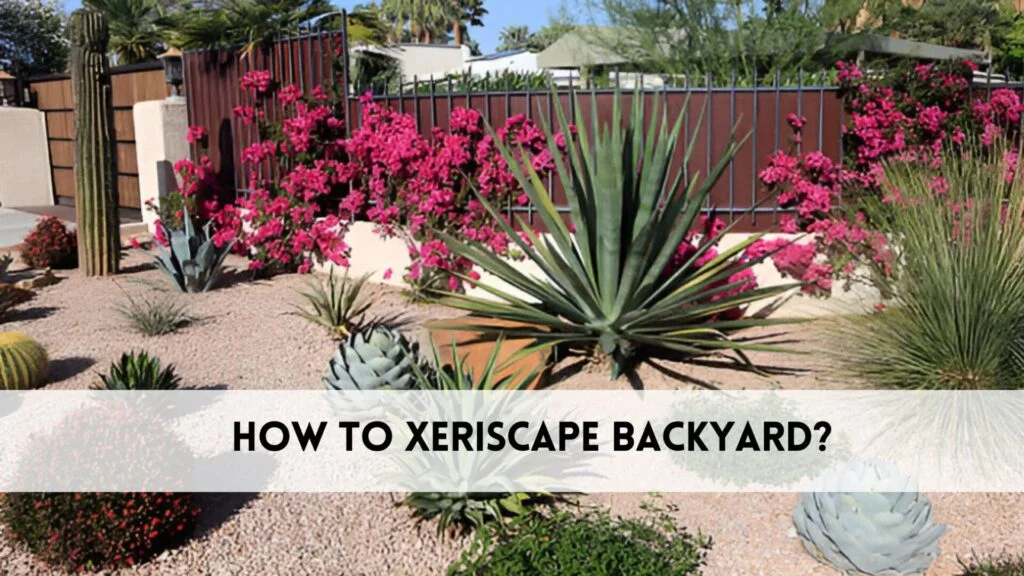Xeriscaping is an eco-friendly landscaping technique designed to minimize water usage by incorporating drought-tolerant plants, efficient irrigation systems, and hardscaping elements such as gravel, mulch, and decorative rocks. How much does it cost to xeriscape a yard? This is a common question among homeowners looking to transform their landscapes into sustainable, water-efficient spaces. With increasing concerns over water scarcity and rising utility bills, more homeowners are turning to xeriscaping as a cost-effective and environmentally responsible alternative to traditional lawns.
Xeriscaping not only conserves water but also reduces maintenance costs, eliminates the need for constant mowing, and enhances curb appeal. This method is particularly beneficial in arid and drought-prone regions, where maintaining a lush, green lawn can be both expensive and impractical. However, before starting a xeriscaping project, it’s essential to understand the cost factors, potential savings, and best practices for achieving an efficient, aesthetically pleasing design. In this guide, we will break down the costs of xeriscaping a yard and how to make it budget-friendly.
How much does it cost to xeriscape a yard?
The cost of xeriscaping a yard varies based on factors such as yard size, materials, plant selection, irrigation systems, and professional labor. Below is a detailed cost breakdown based on yard size, helping homeowners understand the estimated expenses for their xeriscaping project.
| Yard Size | Estimated Cost Range | Key Features |
| Small Yard (500 – 1,000 sq. ft.) | $2,500 – $10,000 | Basic xeriscaping with native plants, mulch, and minimal hardscaping |
| Medium Yard (1,000 – 2,500 sq. ft.) | $7,000 – $18,330 | Drip irrigation, decorative rock features, drought-resistant plants, pathways |
| Large Yard (2,500 – 5,000 sq. ft.) | $12,500 – $50,000 | Professional design, extensive hardscaping, native trees, water-efficient irrigation |
| Extra-Large Yard (5,000+ sq. ft.) | $25,000+ | Custom landscaping, large boulders, custom patios, advanced water-saving systems |
Small Yard (500 – 1,000 sq. ft.)
For homeowners with townhomes, small patios, or compact front yards, xeriscaping offers an affordable and sustainable landscaping solution. The cost to xeriscape a small yard ranges from $3,000 to $7,000, depending on plant selection, irrigation needs, and hardscaping elements. The average cost per square foot falls between $5 and $20, making it one of the most budget-friendly xeriscaping options.
A small xeriscape yard typically includes drought-tolerant plants, mulch to retain moisture, and minimal hardscaping, such as gravel pathways or stone borders. Since water-efficient landscaping significantly reduces maintenance, small yards require fewer resources, making xeriscaping an excellent long-term investment for reducing utility costs and enhancing curb appeal. Homeowners who choose DIY xeriscaping for smaller yards can further cut costs by purchasing plants in bulk and using native species.
Medium Yard (1,000 – 2,500 sq. ft.)
A medium-sized xeriscaped yard is well-suited for suburban homes with an average front or backyard. The total cost generally falls between $7,000 and $18,330, with a per-square-foot cost of $5 to $20. At this size, homeowners can include more advanced xeriscaping features, such as drip irrigation systems, which optimize water efficiency and reduce waste.
Additionally, decorative rock features and gravel pathways can be incorporated to enhance visual appeal while minimizing maintenance. A wider variety of native plants and drought-resistant shrubs can be strategically placed to create a dynamic yet sustainable landscape. While the initial cost is higher than smaller yards, the long-term benefits such as lower water bills and reduced lawn care expenses make xeriscaping a cost-effective solution for homeowners looking to create an eco-friendly outdoor space.
Large Yard (2,500 – 5,000 sq. ft.)
For spacious residential properties, xeriscaping a large yard can range from $12,000 to $50,000, with costs averaging $5 to $20 per square foot. Larger yards provide the opportunity for customized landscaping designs, integrating a mix of softscaping (plants) and hardscaping (decorative elements) to create a visually appealing and sustainable environment. Features such as flagstone paths, dry riverbeds, and rock gardens not only enhance the aesthetics of the yard but also contribute to efficient water management.
Additionally, native trees and shrubs can be planted to create shaded areas that further reduce water evaporation. Due to the complexity of xeriscaping larger yards, many homeowners choose professional landscape designers to ensure optimal plant placement, irrigation efficiency, and long-term sustainability. While the upfront investment is higher, large xeriscaped yards offer significant water conservation and reduced maintenance costs over time.
Extra-Large Yard (5,000+ sq. ft.)
For luxury estates, large properties, or commercial landscapes, xeriscaping costs start at $5,000 and can exceed $20,000 or even more with an average cost per square foot ranging from $5 to $20. This pricing reflects the high level of customization and extensive hardscaping elements required to xeriscape an extra-large yard. Homeowners investing in this level of xeriscaping often incorporate premium landscaping designs, including large decorative boulders, custom patios, and advanced water-saving irrigation systems.
Additionally, exotic drought-resistant plants can be used to create stunning, climate-appropriate landscapes that require minimal upkeep. Large xeriscaping projects often require extensive planning and professional design services, ensuring a well-balanced blend of functionality and aesthetics. While the initial costs are substantial, the long-term savings on water bills and maintenance make it a high-value investment for sustainable landscaping.
How to Xeriscape a Yard?
Transforming your yard into a xeriscape-friendly space requires strategic planning, the right selection of plants, and the integration of hardscaping elements to reduce water consumption. Xeriscaping not only conserves water but also enhances curb appeal and lowers maintenance efforts. Follow these essential steps to create a sustainable, water-efficient landscape:
Plan Your Xeriscape Design
Before making any changes, it’s crucial to develop a comprehensive xeriscape design that maximizes efficiency and aesthetics:
- Identify sunny vs. shaded areas – This helps in choosing the right plants, as some drought-resistant plants thrive in full sun, while others prefer partial shade.
- Select low-water plants suited for your region – Native and drought-tolerant plants require minimal irrigation and adapt well to local climate conditions.
- Incorporate hardscaping elements – Features like gravel, pathways, decorative rocks, and boulders minimize water usage while enhancing visual appeal.
Tip: Use a xeriscape layout planner or consult a professional landscape designer to optimize the yard’s functionality.
Remove Existing Lawn
Traditional grass lawns require significant amounts of water, making them unsuitable for xeriscaping. Replacing them with low-water alternatives reduces both water consumption and maintenance.
- Use solarization – Cover the grass with clear plastic for 4-6 weeks to naturally kill existing turf without using chemicals.
- Manually remove the lawn – Digging out grass with a sod cutter or shovel is a faster approach.
- Consider alternatives to traditional grass – Use artificial turf, drought-tolerant ground covers (like clover, creeping thyme, or sedum), or decorative rocks for a functional and aesthetically pleasing landscape.
Tip: Some cities offer rebates for lawn removal programs, helping you save money on your xeriscaping project.
Improve Soil Quality
Since xeriscaping focuses on water efficiency, soil quality plays a crucial role in moisture retention. Unlike traditional landscaping, xeriscaping doesn’t require frequent fertilization but does benefit from well-prepared soil.
- Add organic mulch – Mulching around plants helps retain moisture, regulate soil temperature, and reduce weed growth.
- Use decomposed granite – A great alternative to regular soil, decomposed granite allows for proper drainage and prevents water pooling.
- Avoid high-maintenance fertilizers – Native plants don’t require chemical fertilizers. Instead, enrich the soil with organic compost or slow-release nutrients for healthier plant growth.
Tip: Test your soil’s pH levels and drainage capacity before planting to ensure the best-growing conditions for drought-tolerant plants.
Install a Drip Irrigation System
Unlike traditional sprinklers, which waste water through evaporation and runoff, a drip irrigation system delivers water directly to the roots of plants.
- Choose a high-efficiency drip irrigation system – It reduces water waste by up to 50-70% compared to traditional watering methods.
- Install inline or emitter tubing – This system slowly releases water, allowing plants to absorb moisture efficiently.
- Use timers and moisture sensors – Automating irrigation ensures optimal watering without overuse.
- Cost: A professionally installed drip irrigation system ranges from $1,000 to $3,500, depending on the yard size and complexity of the system.
Tip: Many municipalities offer rebates for installing water-efficient irrigation systems, reducing your initial investment costs.
Choose Water-Efficient Plants
Selecting the right xeriscape plants is essential for maintaining a beautiful yet low-maintenance landscape. The key is to use drought-tolerant species that thrive with minimal watering.
Opt for native and drought-resistant plants, such as:
- Succulents (Aloe Vera, Agave, Sedum, Cactus) – Require minimal water and thrive in dry climates.
- Ornamental grasses (Blue Fescue, Buffalo Grass, Feather Reed Grass) – Provide texture and movement in the landscape.
- Drought-tolerant shrubs (Sage, Manzanita, Lavender, Juniper, Yucca) – Low maintenance and add structure to the yard.
- Hydrozone your plants – Group plants with similar water needs together to ensure efficient irrigation.
- Use perennial plants – Perennials return each year, reducing replanting costs and maintenance efforts.
Tip: Check local nurseries for water-wise landscaping programs that offer discounts on native and drought-resistant plants.
Add Hardscaping Elements
Hardscaping is a crucial part of xeriscaping because it reduces the need for vegetation while enhancing the functionality and visual appeal of the yard.
- Use permeable materials – Options like gravel, crushed stone, and decomposed granite allow for proper drainage while preventing water runoff.
- Create walkways and decorative paths – Stepping stones, pavers, or flagstone paths enhance aesthetic appeal and reduce soil erosion.
- Incorporate boulders and rock gardens – Large rocks and dry riverbeds add texture and require zero maintenance.
- Consider wooden elements – Features like mulch pathways, raised planters, and wooden pergolas can complement the xeriscaped yard while maintaining a natural feel.
Tip: Hardscaping reduces water usage by over 50%, making it one of the most effective ways to lower xeriscaping costs in the long run.
What Are the Costs of Xeriscaping Plants?
To help you budget for your xeriscaping project, here’s a breakdown of xeriscaping plant costs:
| Plant Type | Average Cost Per Plant |
| Drought-Tolerant Flowers (Lavender, Salvia) | $5 – $15 |
| Succulents (Aloe Vera, Agave, Cactus) | $10 – $50 |
| Ornamental Grasses (Blue Fescue, Buffalo Grass) | $8 – $25 |
| Native Shrubs (Sage, Manzanita) | $15 – $50 |
| Drought-Resistant Trees (Mesquite, Palo Verde) | $50 – $300 |
Tips for Saving Money on Xeriscaping Costs
Xeriscaping can be a cost-effective way to create a beautiful, low-maintenance yard while conserving water. If you’re on a budget, here are some expert tips to help reduce costs without compromising on quality.
Use Native Plants
Native plants are naturally adapted to the local climate, requiring minimal water, fertilizers, and maintenance. Unlike exotic plants, they thrive in regional soil conditions, reducing the need for expensive soil amendments. Additionally, native plants attract pollinators like bees and butterflies, enhancing biodiversity. By choosing drought-resistant species, such as sage, lavender, and yucca, homeowners can cut down on irrigation costs. Many native plants are available at local nurseries or through city-sponsored conservation programs, which often provide discounts or free plants to encourage sustainable landscaping.
Buy Materials in Bulk
Purchasing gravel, mulch, rocks, and soil in bulk is significantly cheaper than buying in small bags. Home improvement stores, garden centers, and local quarries often offer discounted rates for bulk purchases. Ordering materials in large quantities not only reduces per-unit costs but also ensures you have consistent colors and textures for your landscaping project. Additionally, some landscaping supply companies provide free or low-cost delivery, which can further reduce expenses. If you have a smaller project, consider splitting bulk orders with neighbors to take advantage of wholesale pricing.
Look for Free or Discounted Materials
Many cities, counties, and water districts offer free mulch programs, compost giveaways, and rebates on drought-resistant landscaping materials. Some municipalities encourage xeriscaping by providing discounts on native plants or offering financial incentives for removing traditional lawns. Homeowners can also check online marketplaces, community gardening groups, and landscaping businesses for free or low-cost materials such as rocks, bricks, or leftover pavers. Repurposing materials from local construction sites (with permission) or using salvaged items can further reduce costs while being environmentally friendly.
Install Drip Irrigation Over Time
A drip irrigation system is a water-efficient way to keep plants healthy while minimizing waste, but installing a complete system all at once can be expensive. Instead of a large upfront cost, homeowners can implement drip irrigation in phases by prioritizing high-need areas first, such as garden beds and trees, and gradually expanding to the rest of the yard. This staged approach allows homeowners to spread out expenses and adjust their watering system based on plant needs. Additionally, many water agencies provide rebates for installing drip irrigation, reducing initial costs.
Choose Low-Maintenance Hardscaping
Instead of investing in expensive concrete pavers, elaborate patios, or high-end stonework, opt for cost-effective hardscaping alternatives. Materials like decomposed granite, crushed gravel, wood chips, or stepping stones provide attractive pathways and ground cover while being significantly cheaper. These materials also allow for better water drainage and reduce runoff, making them an excellent choice for xeriscaping. Additionally, repurposing old bricks, reclaimed wood, or natural stones from your property can cut costs even further while adding a unique aesthetic to your yard.
Apply for Xeriscaping Rebates
Many state and local water agencies offer financial incentives, rebates, or tax credits for homeowners who replace their traditional lawns with xeriscaping. These programs often cover expenses such as removing turf, installing water-efficient irrigation, or purchasing drought-resistant plants. Some rebates can cover up to 50% of project costs, making xeriscaping a more affordable option. To take advantage of these rebates, homeowners should check with their local water district, city government, or environmental agencies to learn about eligibility requirements and application processes.
Final Words
So, How much does it cost to xeriscape a yard? Xeriscaping is a cost-effective and environmentally sustainable landscaping solution that not only enhances the beauty of your yard but also significantly reduces water consumption. While the initial investment ranges from $3,000 to $25,000, homeowners can expect long-term savings on water bills, reduced maintenance efforts, and increased property value.
By carefully planning your xeriscape backyard design, choosing native drought-resistant plants, and utilizing budget-friendly materials, you can achieve a visually appealing, low-maintenance yard that thrives in any climate. Additionally, incorporating efficient irrigation systems and strategic hardscaping elements ensures both functionality and sustainability.
For homeowners looking to reduce their ecological footprint while maintaining a stunning outdoor space, xeriscaping is a smart investment. Start planning your xeriscape today and enjoy the long-term benefits of a water-efficient, low-maintenance, and eco-friendly landscape!



